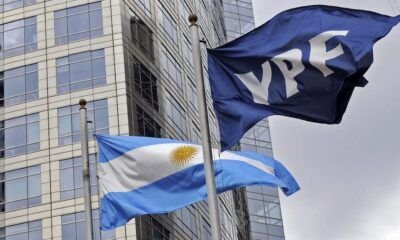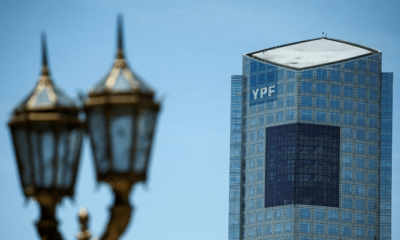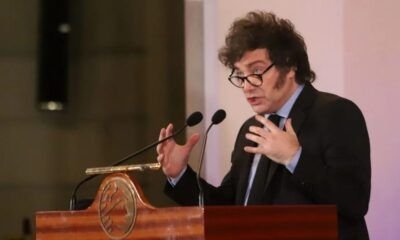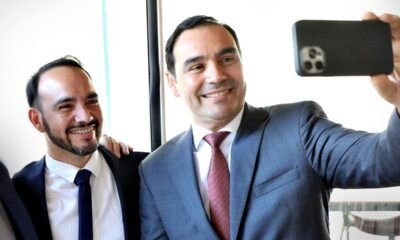INTERNACIONAL
Una curiosa forma de protesta en Turquía: la oposición desafió al gobierno de Recep Erdogan con un exitoso «día sin compras»
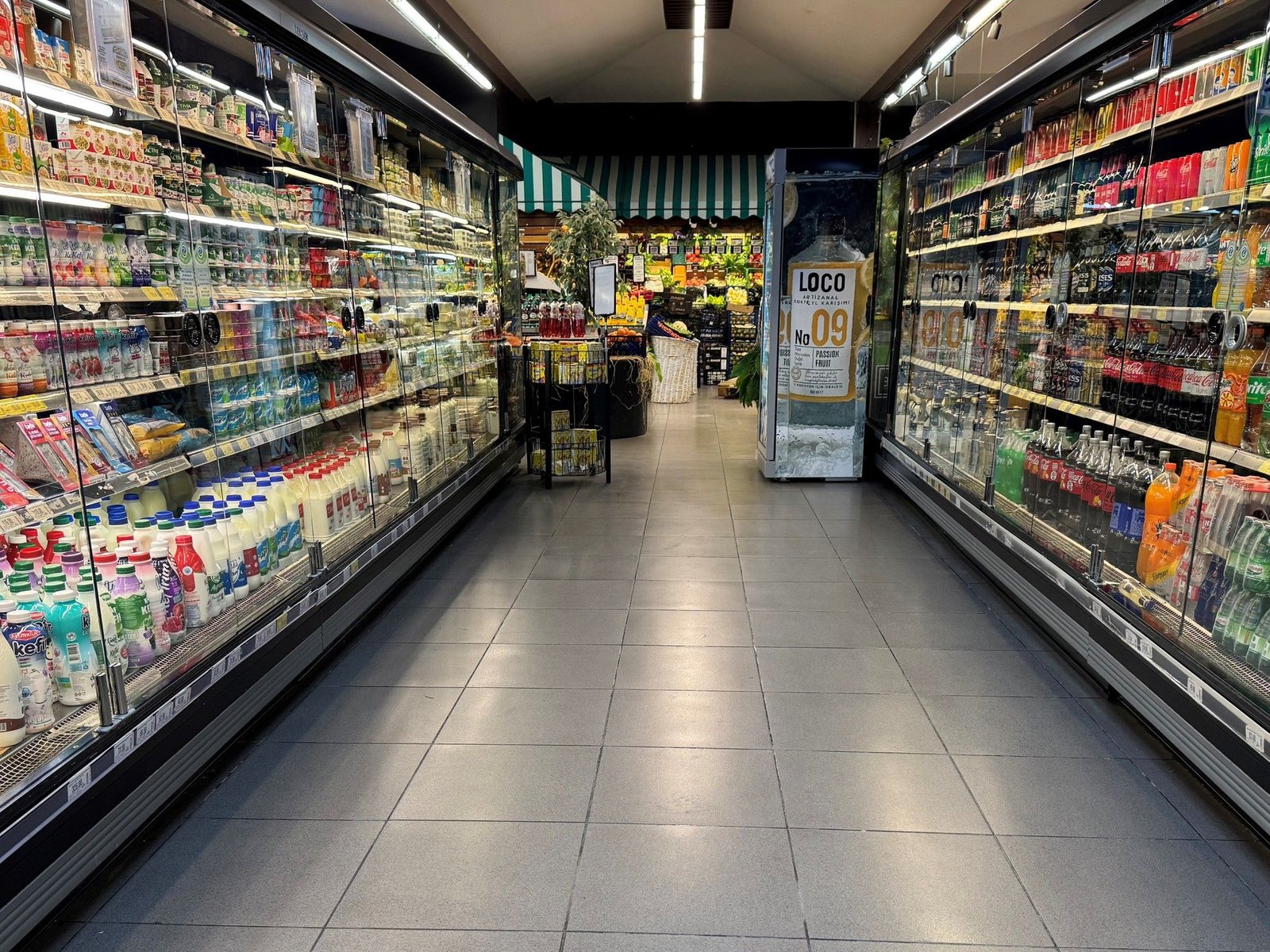
El día de «cero compras» convocado este miércoles por la oposición en Turquía como forma de protesta contra el Gobierno de Recep Tayyip Erdogan -tras el arresto del alcalde socialdemócrata de Estambul, Ekrem Imamoglu- tuvo un gran impacto, según relataron a EFE varios empresarios.
«El boicot parece tener bastante éxito, o esa es la impresión que recibimos de nuestras filiales. Quien viene a comprar hoy, en general solo compra artículos de primera necesidad, como pan», dijo a EFE el dueño de una cadena local de supermercados, que pidió el anonimato.
El gerente de otra cadena de supermercados, presente sobre todo en Ankara, estimó que hacia el mediodía, la afluencia de clientes era una cuarta parte de lo habitual.
«Solo compran pan y cosas básicas. Por lo que vemos en nuestras tiendas, el boicot tiene mucho éxito», dijo este empresario, que tampoco quiso ver publicado su nombre.
También el director de una cadena de gasolineras, que asimismo pidió anonimato, estimaba el volumen de clientes en la cuarta parte de lo habitual.
El boicot ha causado gran polarización en el discurso público, ya que para los movimientos de protesta, encabezados por el partido de Imamoglu, el socialdemócrata CHP, es una especie de pulso para mostrar su fuerza, mientras que desde el Gobierno se ha calificado de «sabotaje» a la economía y se ha tildado incluso de ilegal.
«Llamar al boicot de nuestros comerciantes, de nuestros productos locales y nacionales, es una traición al país y la nación», escribió en la red X el ministro del Interior, Ali Yerlikaya, junto a una foto que lo muestra haciendo la compra en un supermercado.
También el ministro del Comercio, Ömer Bolat, difundió una imagen suya haciendo la compra.
Durante las masivas protestas de marzo, el CHP, el mayor partido de la oposición, había pedido boicotear varias populares marcas propiedad de grandes conglomerados empresariales bien conectados con el Gobierno y a menudo dueños de prensa y cadenas de televisión que difunden únicamente el discurso oficial.
Pero en añadidura, los movimientos opositores compuestos en gran parte por estudiantes y jóvenes habían difundido en redes el 2 de abril como fecha de «cero compras» para mostrar el poder de la ciudadanía y como protesta por la carestía de vida general.
El diario opositor BirGün recuerda que el propio Erdogan había invitado aún en diciembre pasado a la ciudadanía a boicotear «productos y servicios de precios inflados» para así frenar la inflación, actualmente en un 39 % interanual.
Sin embargo, la Fiscalía de Estambul ha iniciado una investigación sobre llamamientos a sumarse al boicot al considerarlas delitos de odio y discriminación e incitación a la hostilidad.
La polémica entre defensores y detractores del boicot ha incendiado las redes y el director de la cadena pública TRT ha anunciado que expulsará de la popular telenovela Teskilat a la actriz Aybüke Pusat, por haber difundido en su red social el llamamiento al boicot.
El hastag #AybükePusat, usado por ambos bandos, se convirtió en tendencia, con más de 60.000 mensajes en la red X, y numerosas actrices turcas respaldaron a su colega frente al despido.
INTERNACIONAL
Ahora Trump dice que «puede que en algún momento» hable con Brasil sobre los aranceles del 50%

El presidente Donald Trump dijo este viernes que quizás hable “en algún momento, pero no ahora” con el jefe de Estado brasileño Lula Da Silva sobre los aranceles de 50% que anunció sorpresivamente para Brasil y que disparó una fuerte tensión entre Estados Unidos y el gigante sudamericano. El republicano insistió además con su reclamo: “(Lula) está tratando al presidente (Jair) Bolsonaro de manera muy injusta”.
Trump partió en la mañana de este viernes rumbo a Texas para observar de primera mano la devastación causada por la catastrófica inundación de la semana pasada, que provocó al menos 120 muertos y decenas de desaparecidos, entre ellos varias niñas que estaban en un campamento de verano.
De traje azul, sin corbata, Trump estaba acompañado de su esposa Melania, que no suele sumarse a las actividades oficiales, con una chaqueta beige Dolce&Gabbana y zapatillas Converse.
Antes de subirse al helicóptero que desde los jardines de la Casa Blanca lo transportó a la base Andrews a tomar el avión, Trump habló con los periodistas sobre varios temas, entre ellos la tensión con Brasil.
Concretamente le preguntaron si tenía planes de hablar con el presidente Lula sobre los aranceles del 50% a todos los productos brasileños que ingresan a EE.UU, que se aplicarán a partir del 1 de agosto y que el mismo Trump anunció en una carta el miércoles.
El republicano justificó la fuerte suba con razones que van más allá de lo estrictamente comercial. Según él, existe una “caza de brujas” contra el ex presidente Bolsonaro, acusado en la justicia de promover un golpe de Estado en Brasil y que podría ser condenado por el Supremo Tribunal Federal a más de 30 años de prisión.
En su respuesta a los periodistas, Trump dejó la puerta abierta al diálogo, pero no demasiado. “Quizás hable con él en algún momento, pero no ahora”, dijo. Esta declaración se produce después de que el líder del Partido de los Trabajadores (PT) afirmara en una entrevista con Globo que no tiene planes de hablar con el magnate republicano por ahora, pero que lo hará si lo considera necesario en el futuro.
Enseguida Trump continuó con una defensa del ex mandatario. “Está tratando al presidente Bolsonaro de forma muy injusta”, agregó.
Y siguió: «Es un buen hombre. Lo conozco bien, negocié con él. Era un negociador muy duro, un hombre muy honesto que ama al pueblo brasileño», dijo Trump. «No debería haberme caído bien porque era muy difícil negociar con él, pero también muy honesto, y conozco tanto a los honestos como a los corruptos», enfatizó Trump.
Al utilizar como argumento la supuesta “caza de brujas” contra Bolsonaro, la tensión entre los dos países es difícil de bajar porque ya no se trata de un problema comercial sino político.
Trump parece empeñado en “salvar” a su amigo de la justicia. Con ideas conservadoras, hábil uso de redes sociales y estilo crudo que muchas veces maltrataba a mujeres y minorías, Bolsonaro era conocido en Washington como el “Trump del trópico”.
El jefe de la Casa Blanca se siente identificado con Bolsonaro quien, como él en 2020, desconoció que había perdido las elecciones y denunció un fraude electoral. Muchos ven también un paralelismo en el asalto a edificios gubernamentales de Brasilia en 2023 por parte de militantes bolsonaristas con la invasión al Capitolio del 6 de enero de 2021 en medio de una marcha de simpatizantes de Trump.
Pero el tema en Brasil está en manos de la Corte Suprema y, por más que Lula quisiera, el poder ejecutivo supuestamente no puede influir en las decisiones de la justicia. Lula ya ha calificado la postura del estadounidense como una “injerencia” e “intromisión” en los asuntos internos. “Brasil es una nación soberana con instituciones independientes y no aceptará ninguna forma de tutela”, advirtió.
Más allá de lo político, en su carta a Lula el republicano alegó un «déficit insostenible» en las relaciones comerciales entre ambos países, a pesar de que el gobierno brasileño afirma haber tenido un superávit de más de 400.000 millones de dólares a favor de Estados Unidos en los últimos 15 años.
Mientras tanto, el gobierno de Lula analiza responder a Trump con suba de aranceles a productos estadounidenses que ingresan a Brasil. Aunque el jefe de la Casa Blanca ya amenazó que si los aumentan él los subirá aún más.
INTERNACIONAL
FBI’s Dan Bongino thinking of resigning after clash with AG Pam Bondi over Epstein files fallout: Source
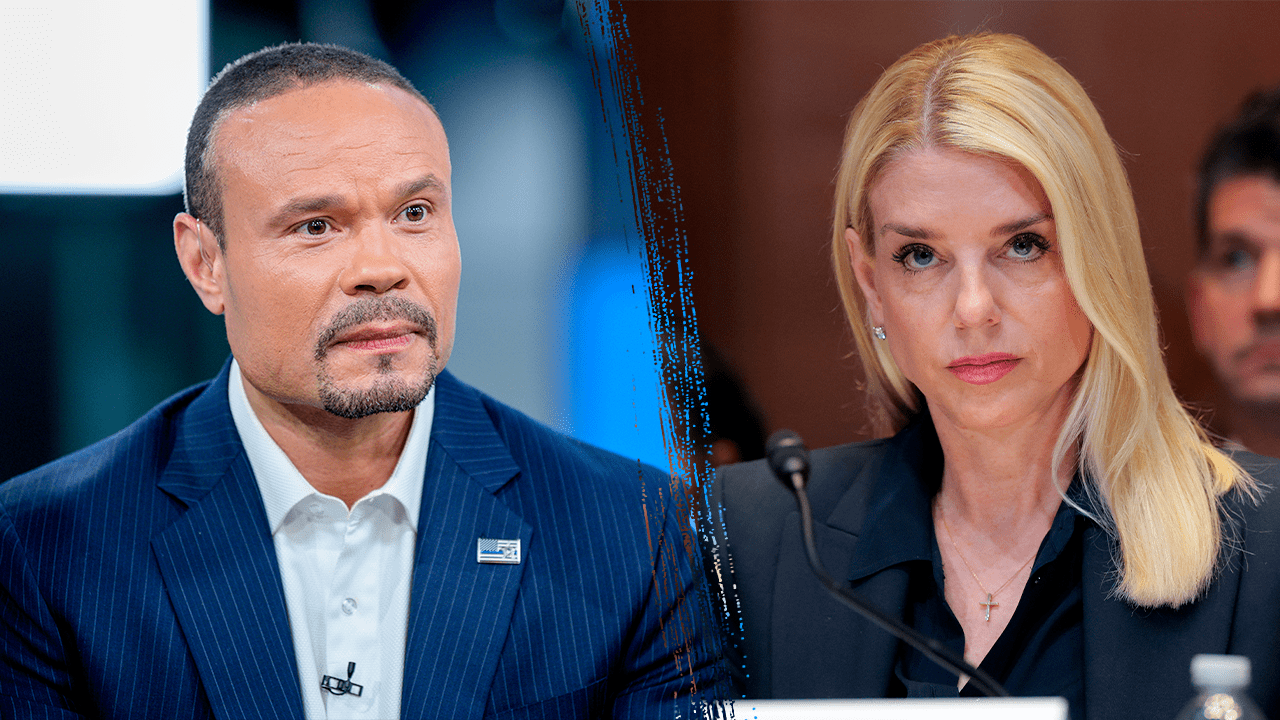
NEWYou can now listen to Fox News articles!
FBI deputy director Dan Bongino is considering resigning over the Justice Department’s handling of the Jeffrey Epstein files, a source told Fox News Digital, noting that Bongino took a day off from work on Friday due to his frustrations.
Bongino has not been seen in the office since Wednesday, a source told Fox News Digital. He has yet to make a final decision about his future, the source said.
The latest revelation comes on the heels of a heated argument between Bongino and U.S. Attorney General Pam Bondi that occurred on Wednesday at the White House, two sources confirmed.
BONDI UNDER SIEGE AFTER DOJ REVEALS NO EPSTEIN CLIENT LIST
Jeffrey Epstein and Attorney General Pam Bondi. (Rick Friedman Photography/Corbis; Getty Images)
Bondi and FBI Director Kash Patel have been in touch several times during the past few days and are on the same page, a source told Fox News Digital.
Sources close to Bondi say she has no intention of stepping down and is proud of the department and its work. Patel, too, says he is happy with his job and has no intention of leaving, a source in close contact with the director told Fox News Digital.
«President Trump has assembled a highly qualified and experienced law and order team dedicated to protecting Americans, holding criminals accountable, and delivering justice to victims. This work is being carried out seamlessly and with unity,» White House Principal Deputy Press Secretary Harrison Fields told Fox News Digital. «Any attempt to sow division within this team is baseless and distracts from the real progress being made in restoring public safety and pursuing justice for all.»
Earlier on Friday, Deputy Attorney General Todd Blanche also pushed back on reports of internal strife.
«I worked closely with @FBIDirectorKash and @FBIDDBongino on the joint FBI and DOJ memo regarding the Epstein Files,» Blanche posted on X. «All of us signed off on the contents of the memo and the conclusions stated in the memo.
«The suggestion by anyone that there was any daylight between the FBI and DOJ leadership on this memo’s composition and release is patently false.»
The Department of Justice (DOJ) and FBI on Sunday released a joint review that ended theories about an alleged Epstein client list, concluding there was no such list detailing the names of the world’s elite who allegedly took part in Epstein’s history as a sexual predator.
The DOJ also concluded the disgraced financier committed suicide in his New York City jail cell in 2019 while awaiting further sex trafficking charges.
The latest revelation comes on the heels of President Donald Trump’s quip to a White House reporter during a cabinet meeting, in which he called the late sex criminal and financier a «creep.»
«Can I just interrupt for one second?» Trump said after a reporter directed an Epstein question at Bondi. «Are you still talking about Jeffrey Epstein?»
HEAD HERE FOR THE LATEST FOX NEWS POLLING
«This guy’s been talked about for years. You’re asking.… We have Texas, we have this, we have all of the things. And are people are still talking about this guy, this creep?» Trump asked. «That is unbelievable.»
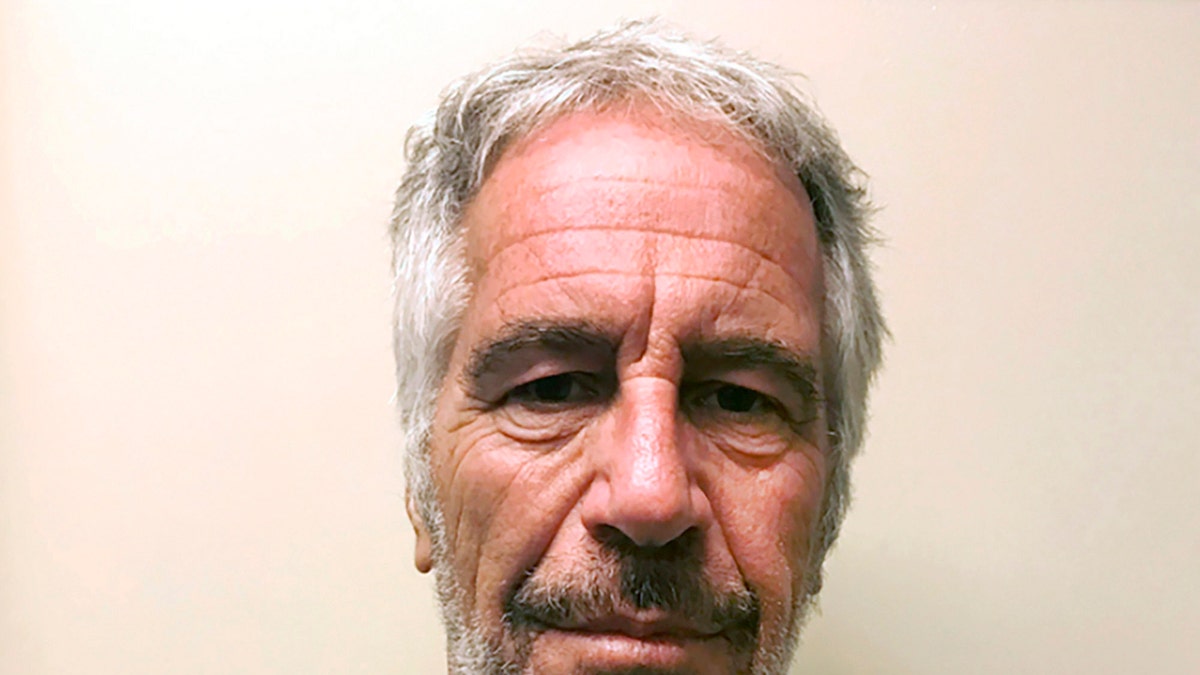
Jeffrey Epstein. (AP, File)
Public outrage ensued following the release of a prison surveillance video that the administration used to prove that no one entered Epstein’s cell in the hours leading up to his death.
The 10-hour video, though, has one minute missing, which has fueled conspiracy theories that the administration is participating in a cover-up involving Epstein’s death.
«President Trump is proud of Attorney General Bondi’s efforts to execute his Make America Safe Again agenda, restore the integrity of the Department of Justice, and bring justice to victims of crime. The continued fixation on sowing division in President Trump’s Cabinet is baseless and unfounded in reality,» said White House press secretary Karoline Leavitt.
Fox News Digital’s Emma Colton contributed to this report.
INTERNACIONAL
Ataxias hereditarias: investigadores argentinos revelaron cuáles son los síntomas clave

Las ataxias hereditarias forman parte de un grupo de enfermedades del sistema nervioso. Hacen que para el cuerpo humano sea difícil controlar los movimientos de manera precisa.
Se llaman “hereditarias” porque pasan de padres a hijos a través de los genes. Son enfermedades poco frecuentes que afectan principalmente el cerebelo y esporádicamente los nervios, por lo que provocan pérdida de equilibrio y coordinación.
En la revista especializada The Cerebelum, se publicó el estudio más completo sobre la situación de las ataxias hereditarias en la Argentina.

Uno de los autores es Marcelo Merello, investigador del Conicet y director de la carrera de médico especialista en neurología del Fleni y la Universidad de Buenos Aires.
El otro coautor es Malco Rossi, médico neurólogo e investigador del Conicet y del Servicio de Movimientos Anormales del Departamento de Neurología en Fleni.

Las ataxias hereditarias llevan a que el cuerpo pierda equilibrio y coordinación. “Las personas que las tienen suelen caminar dando pasos inseguros, como si estuvieran mareadas, y también pueden perder fuerza en brazos y piernas”, explicó el doctor Merello al ser entrevistado por Infobae.
“Los síntomas motores más frecuentes incluyen inestabilidad al caminar, dificultad para coordinar los brazos y problemas del habla”, precisó.
Otros síntomas también pueden ser: la fatiga, la visión doble y los problemas en la escritura.

Los síntomas pueden empezar desde la infancia temprana, pero lo más común es que se presenten durante la adolescencia o la juventud.
“No obstante, los adultos pueden presentar también algunos tipos de ataxias hereditarias”, mencionó el doctor Rossi.

Los investigadores recopilaron información de todo el país sobre tipos más comunes y formas de aparición de las ataxias hereditarias.
Se propusieron estudiar a fondo la situación porque muchos casos de pacientes quedaban sin respuesta, y las familias no sabían las causas reales.
Aunque existen muchas formas de las enfermedades, los investigadores encontraron que las más comunes en la Argentina son la ataxia de Friedreich (ATX-FXN) y las llamadas ataxias espinocerebelosas.
Si bien se han descripto más de 40 ataxias espinocerebelosas, las SCA1 (ATX-ATXN1), SCA2 (ATX-ATXN2) y SCA3 (ATX-ATXN3) son las más prevalentes en el país.

También encontraron diferencias con otros países. En Argentina la SCA2 es la forma más frecuente de ataxia espinocerebelosa, pero, a diferencia de Brasil, Perú y México, la SCA10 casi no aparece.
“Estas diferencias en la distribución de subtipos pueden deberse a efectos fundador y patrones migratorios históricos”, afirmaron los investigadores.
Esta diferencia de prevalencia con otros países de la región es importante para guiar al profesional médico.

Uno de los objetivos fue mostrar lo necesario que es saber cuántos y cómo viven los pacientes con ataxia.
Sin embargo, todavía no hay un registro exacto de cuántas personas tienen ataxia hereditaria en el país, y eso hace más difícil saber cuán grave es el problema.
“La falta de registros nacionales y de información epidemiológica dificulta la comprensión real de la magnitud del problema”, explicaron los autores.

Además, el estudio constató que entre el 65 % y el 82 % de los pacientes con ataxias hereditarias no alcanzan diagnóstico genético definitivo.
Pese a usar tecnologías modernas, que incluyen la secuenciación de exomas y las búsquedas de expansiones anormales de genes, muchas veces no lograron identificar la causa genética.
Otra barrera es la dificultad y el alto costo para realizar los análisis genéticos. “El costo elevado de los estudios, la devaluación y las restricciones cambiarias restringen la disponibilidad de los análisis genéticos en el sistema público-privado. A esas situaciones se suma la dificultad para enviar muestras de sangre al extranjero”, dijo Merello.
El acceso a pruebas genéticas en Argentina se ve dificultado por múltiples factores, incluyendo cobertura de seguros limitada y costos crecientes de reactivos. Algunas familias deben esperar años para saber el nombre exacto de la enfermedad.

Los especialistas propusieron cinco acciones para que las personas con ataxias hereditarias reciban mejor atención y tratamiento:
- implementar estudios de cohortes con mejor tecnología
- crear un registro nacional de pacientes con ataxias
- reforzar la colaboración internacional
- crear centros de atención interdisciplinaria
- mejorar el acceso a pruebas genéticas
“A partir de la investigación, se destaca la importancia de que las personas, sus familias y los profesionales de la salud puedan identificar los síntomas de manera rápida y que se pueda trabajar en conjunto para acompañar a los pacientes”, resaltó el doctor Rossi.

Consultado por Infobae, el médico neurólogo Marcelo Kauffman, investigador del Conicet y jefe de la Unidad Neurogenética del Hospital Ramos Mejía de Buenos Aires, coincidió en que “los pacientes con ataxias hereditarias enfrentan todavía barreras para acceder a un diagnóstico genético, principalmente por las dificultades para obtener la financiación de los estudios a través de un sistema de salud fragmentado”.
En 2020 Kauffman junto con Josefina Pérez Maturo, Lucía Zavala y colaboradores habían publicado un estudio de cohortes que reveló que solo uno de cada tres pacientes con ataxia hereditaria recibe un diagnóstico molecular preciso, aunque la cifra mejora notablemente en quienes tienen antecedentes familiares. Se publicó en Journal of Human Genetics.
“Si bien el acceso a los estudios genéticos presenta desafíos, nuestro trabajo de investigación permitió alcanzar un diagnóstico molecular en el 34 % de nuestra cohorte, un dato también recogido en el trabajo de Rossi y Merello”, señaló Kauffman, quien forma parte del Instituto de Investigaciones en Medicina Traslacional (IIMT), que depende del Conicet y el Hospital Austral.
Ese resultado -opinó- “subraya la importancia de mantener la financiación para sostener los equipos de especialistas y la infraestructura que han hecho posibles estos avances cruciales para decenas de familias”.
,beanie,blouse,fr,hand,head,keeping,lady,looking,upset,wonderful
-
ECONOMIA3 días ago
Este debería ser el precio del dólar en la Argentina según el Índice Big Mac
-
POLITICA22 horas ago
Causa Seguros: la Justicia procesó a Alberto Fernández por incompatibilidad en los deberes de funcionario
-
POLITICA2 días ago
Sebastián Pareja confirmó el nombre de la alianza con el Pro, que impone el sello libertario



